RULE 1 – Application
- The abovementioned rules shall apply to all vessels upon the high seas and in all waterways connected therewith, navigable by seagoing vessels.
- Appropriate authorities may make special rules for harbours, roadsteads, rivers, lakes or inland waterways connected with the high seas and navigable by seagoing vessels, provided that such rules shall comply as closely as possible to these rules.
- Governments of states may make special rules with respect to additional station or signal lights or shapes or whistle signals for ships of war and vessels proceeding under convoy or signal lights for fishing vessels fishing as a fleet. These additional lights, shapes or whistle signals must be of such a nature that they cannot be confused with any light, shape or whistle signal contained in these rules.
- Traffic separation schemes may be adopted by the international maritime organisation (IMO) for the purpose of these rules.
- If it is determined that a vessel of special construction or purpose cannot comply fully with the provisions of these rules, the government concerned shall ensure that any deviations from these rules shall comply as closely as possible with the rules in respect of such vessels.
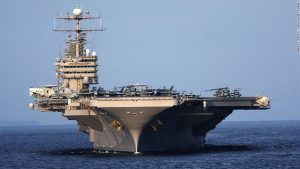
Modern aircraft carrier. Example where placement of navigation lights not strictly in accordance with the regulations.

Modern frigate. Another example where the placement of navigation lights is not completely in accordance with the regulations.
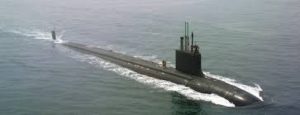
Modern submarine. Third example where it is not feasible to place navigation lights strictly in accordance with the regulations.

Diamond mining vessel. Example of a vessel, the construction of which makes it difficult to comply fully with the regulations.
RULE 2 – Responsibility
- Nothing in the rules shall exonerate any vessel, owner, master or crew from the consequences of any neglect to comply with the rules or of the neglect of any precaution which may be required by the ordinary practice of seamen.
- In interpreting and complying with these rules, due regard shall be had to all dangers of navigation and collision and to any special circumstances, including the limitations of the vessels involved, which may make a departure from these rules necessary to avoid immediate danger.
RULE 3 – General definitions
- The word “vessel” includes every description of water craft, including non-displacement craft (hovercraft, hydrofoils), WIG (wing-in-ground effect) craft and seaplanes, used or capable of being used as a means of transportation on water.
- The term “power driven vessel” means any vessel propelled by machinery.
- The term “sailing vessel” means any vessel under sail provided that propelling machinery, if fitted, is not being used.
- The term “vessel engaged in fishing” means any vessel fishing with nets, lines, trawls or other fishing apparatus which restrict manoeuvrability, but does not include a vessel fishing with trolling lines or other fishing apparatus which do not restrict manoeuvrability.
- The term “seaplane” includes any aircraft designed to manoeuvre on the water.
- The term “vessel not under command” means a vessel which through some exceptional circumstance is unable to manoeuvre as required by these rules and is therefore unable to keep out of the way of another vessel.
- The term “vessel restricted in its ability to manoeuvre” means a vessel which from the nature of her work is restricted in her ability to manoeuvre as required by these rules and is therefore unable to keep out of the way of another vessel. The term “vessel restricted in her ability to manoeuvre” shall include but not limited to:
- a vessel engaged in laying, servicing, or picking up a navigational mark, submarine cable or pipeline;
- a vessel engaged in dredging, surveying or underwater operations;
- a vessel engaged in replenishment or transferring persons, provisions or cargo whilst
underway. - a vessel engaged in the launching or recovery of aircraft:
- a vessel engaged in mine clearance operations;
- a vessel engaged in a towing operation such as severely restricts the towing vessel
and her tow in their ability to deviate from their course. - The term “vessel constrained by her draught” means a power driven vessel which, because of her draught in relation to the available depth and width of navigable water, is severely restricted in her ability to deviate from the course she is following.
- The word “underway” means a vessel is not at anchor, or made fast to the shore or afround.
- The term “making way” means the vessel is actually being propelled by machinery or sail through the water.
- The words “length” and “breadth” of a vessel means her length overall and greatest breadth.
- Vessels shall be deemed to be “in sight” of one another only when one can be observed visually from the other.
- The term “restricted visibility” means any condition in which visibility is restricted by fog, mist, falling snow, heavy rainstorms, sandstorms and any other similar cases.
- The term “Wing-In-Ground (WIG) craft” means any multimodal craft which, in its main operational mode, flies in close proximity to the surface by utilising surface-effect action.
- The term “mile” means nautical mile (1852 metres).

Cable repair vessel.
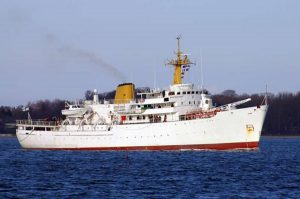
Survey vessel.

Dredger.

Vessels engaged in replenishment whilst under way. A practise mainly carried out by warships.

Vessel operating helicopters.
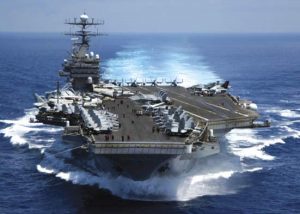
Aircraft carrier operating aircraft.
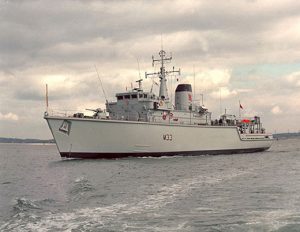
Mine hunter.

Oil rig being towed. Tug’s manoeuvrability severely restricted.
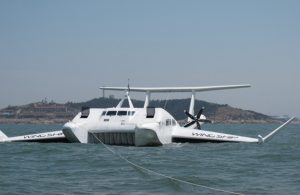
WIG craft on the water.

WIG craft “in flight”.

Hovercraft. A vessel with a non-displacement mode capability.
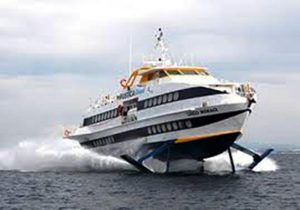
Hydrofoil. A further example of vessels which have a non-displacement mode.

Catalina sea plane.

Seaplane used mostly on inland waterways. Sometimes referred to as a float plane.

